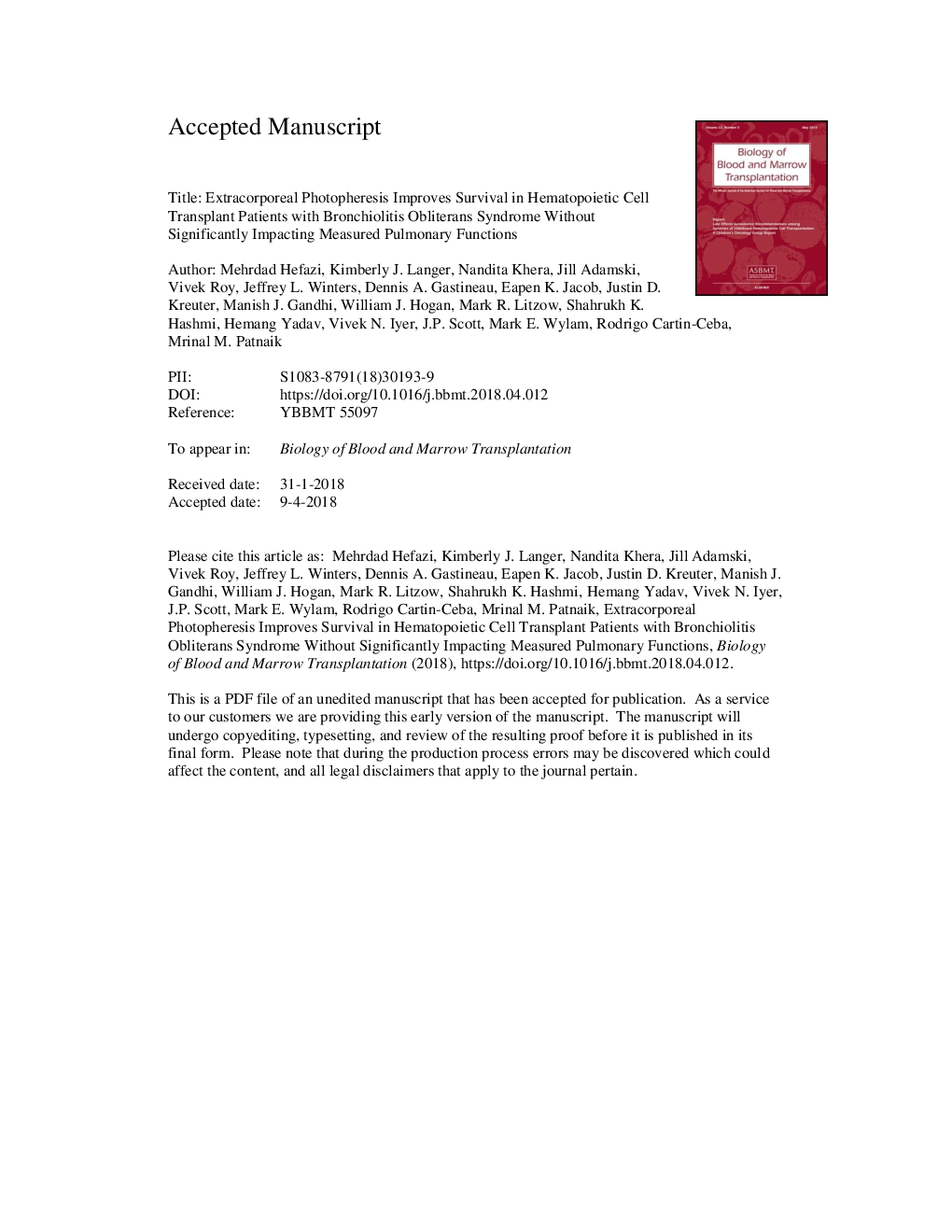| Article ID | Journal | Published Year | Pages | File Type |
|---|---|---|---|---|
| 10157465 | Biology of Blood and Marrow Transplantation | 2018 | 32 Pages |
Abstract
We carried out the first matched retrospective cohort study aimed at studying the safety and efficacy of extracorporeal photopheresis (ECP) for bronchiolitis obliterans syndrome (BOS) after allogeneic hematopoietic cell transplantation (HCT). Medical records of 1325 consecutive adult patients who underwent HCT between 2005 and 2015 were reviewed. Seventy-four patients (median age, 51 years) with a diagnosis of BOS were included in the study. After propensity-score matching for BOS severity, 26 patients who underwent â¥3 months of ECP were matched to 26 non-ECP-treated patients, who were assigned an index date corresponding to the ECP start date for their matched pairs. The rate of decline in FEV1 percentage predicted (FEV1PP) decreased after ECP initiation (and after index date in the non-ECP group), with no significant difference between the 2 groups (Pâ=â.33). On a multivariable analysis that included baseline transplant and pulmonary function test variables, matched related donor HCT (HR, .1; 95% CI, .03 to .5; Pâ=â.002), ECP (HR, .1; 95% CI, .01 to .3; Pâ=â.001), and slower rate of decline in FEV1PP before the ECP/index date (HR, .7; 95% CI, .6 to .8; Pâ=â.001) were associated with a better overall survival. At last follow-up, non-ECP-treated patients were more likely to be on >5âmg daily dose of prednisone (54% versus 23%; Pâ=â.04) and had a greater decline in their Karnofsky performance score (mean difference, â9.5 versus â1.6; Pâ=â.06) compared with ECP-treated-patients. In conclusion, compared with other BOS-directed therapies, ECP was found to improve survival in HCT patients with BOS, without significantly impacting measured pulmonary functions. These findings need prospective validation in a larger patient cohort.
Keywords
Related Topics
Life Sciences
Biochemistry, Genetics and Molecular Biology
Cancer Research
Authors
Mehrdad Hefazi, Kimberly J. Langer, Nandita Khera, Jill Adamski, Vivek Roy, Jeffrey L. Winters, Dennis A. Gastineau, Eapen K. Jacob, Justin D. Kreuter, Manish J. Gandhi, William J. Hogan, Mark R. Litzow, Shahrukh K. Hashmi, Hemang Yadav, Vivek N. Iyer,
